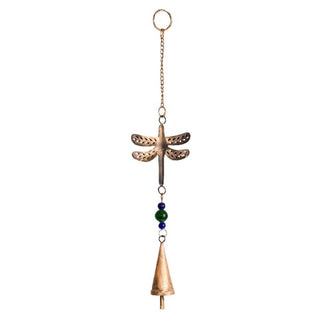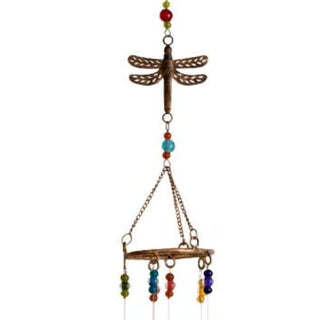Wind Chimes
Wind chimes are revered as symbols of good luck in parts of Asia and play a significant role in Feng Shui. Their modern use began around 1100 C.E. when the Chinese started casting bells. Skilled metal artisans crafted the yong-zhong, a bell without a clapper, primarily for religious ceremonies. Wind chimes of that era were often hung in temples to ward off evil spirits and attract peaceful energies.
Buddhists soon integrated wind chimes and wind-bells into their rituals, adorning temples, shrines, pagodas, and caves with these melodic instruments. This practice continues, with wind chimes still hung in doorways and windows to keep bad luck at bay and welcome positive energy.
In Bali, farmers place bamboo wind chimes throughout rice fields to scare away pests and bring good fortune and healthy crops. The soothing sound of wind chimes blowing in the breeze has a profound ability to reduce stress, promote relaxation, and enhance calmness. Their melodies are believed to have a healing effect on both body and mind, relieving fatigue and fostering creativity and positivity.
The harmonious tones of wind chimes are thought to unblock emotional stress, bringing inner peace and heightened awareness. They also help create a sense of balance in one's life. Historically, wind chimes were used to detect early changes in wind speeds, signaling oncoming storms. Today, they are still utilized on ships and in fields to determine wind direction and current weather conditions.
Enchanting Triple Moon Bamboo Wind Chime 🌙🌟
Regular price
$44.99
$34.99
Sale
- Unit price
- /per
2 styles, 2 styles
- Triple Moon
- Goddess Triple Moon
You’re viewing 1-14 of 14 products
Wind chimes are revered as symbols of good luck in parts of Asia and play a significant role in Feng Shui. Their modern use began around 1100 C.E. when the Chinese started casting bells. Skilled metal artisans crafted the yong-zhong, a bell without a clapper, primarily for religious ceremonies. Wind chimes of that era were often hung in temples to ward off evil spirits and attract peaceful energies.
Buddhists soon integrated wind chimes and wind-bells into their rituals, adorning temples, shrines, pagodas, and caves with these melodic instruments. This practice continues, with wind chimes still hung in doorways and windows to keep bad luck at bay and welcome positive energy.
In Bali, farmers place bamboo wind chimes throughout rice fields to scare away pests and bring good fortune and healthy crops. The soothing sound of wind chimes blowing in the breeze has a profound ability to reduce stress, promote relaxation, and enhance calmness. Their melodies are believed to have a healing effect on both body and mind, relieving fatigue and fostering creativity and positivity.
The harmonious tones of wind chimes are thought to unblock emotional stress, bringing inner peace and heightened awareness. They also help create a sense of balance in one's life. Historically, wind chimes were used to detect early changes in wind speeds, signaling oncoming storms. Today, they are still utilized on ships and in fields to determine wind direction and current weather conditions.





























